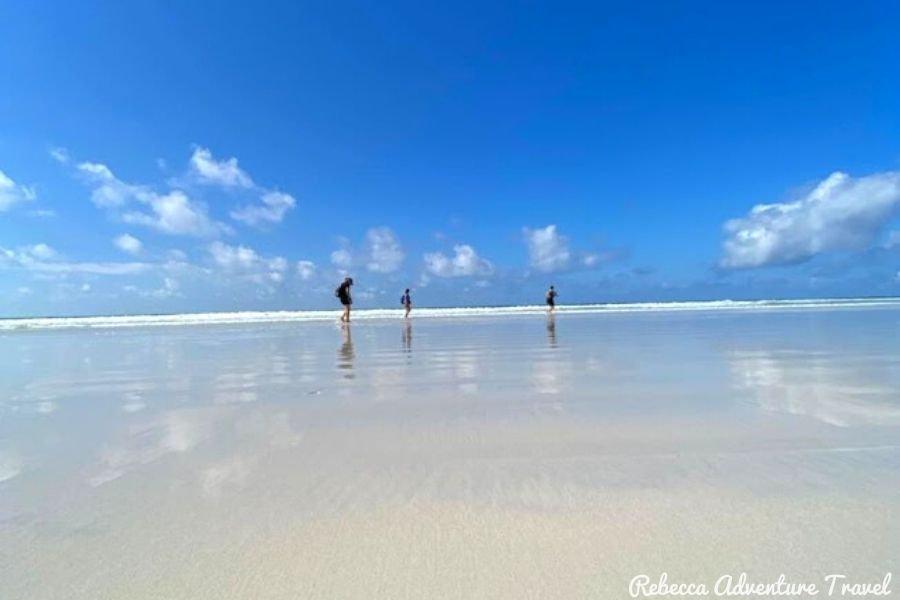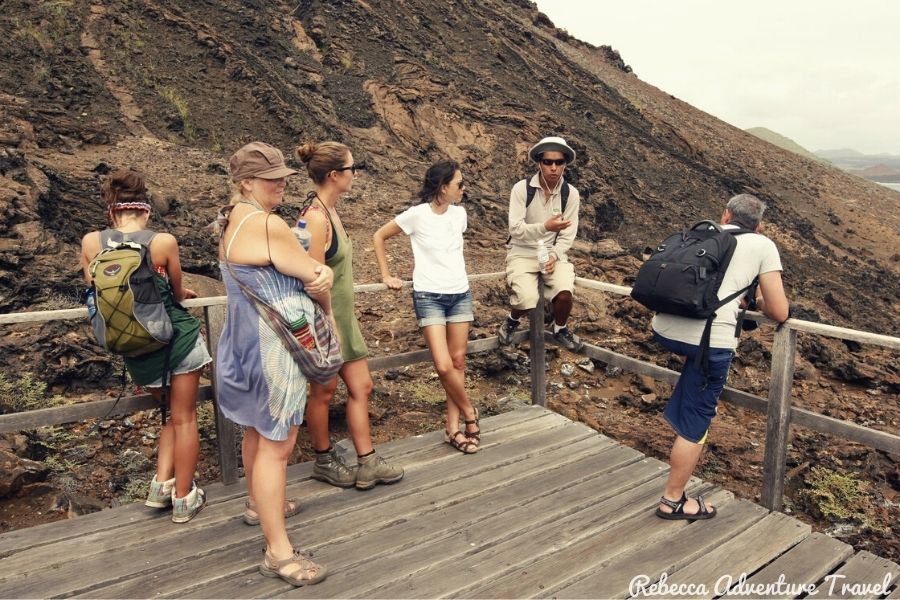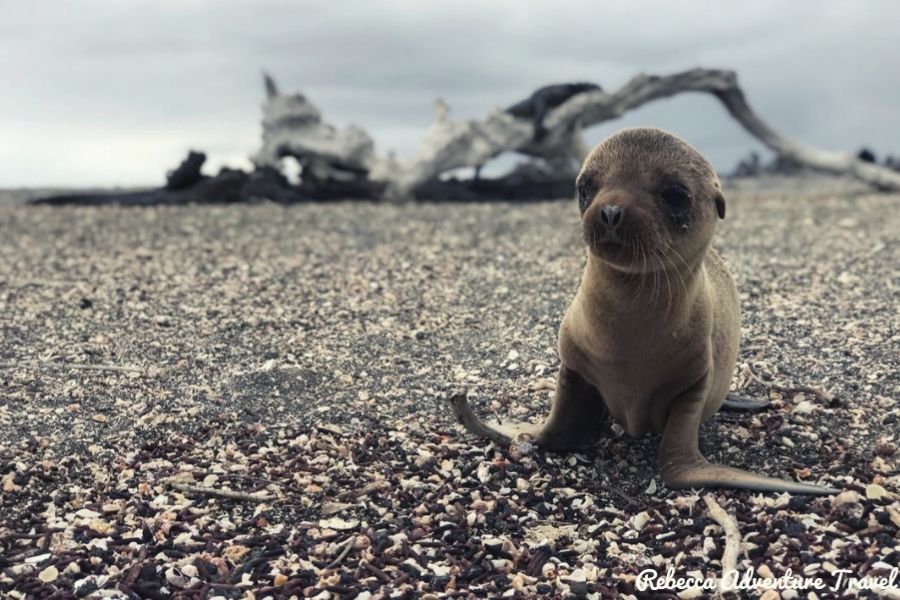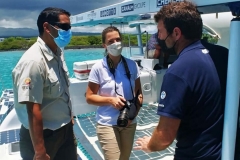Safeguarding The Galapagos Islands – Responsible Travel

The Galapagos Islands are a natural sanctuary, and as such, they need to be protected. There are many Ecuadorian laws placed in order to preserve the flora and fauna of this diverse Archipelago, but there are some areas where travelers can help, as well. In this blog, you will find five aspects to take into account with respect to safeguarding the Galapagos Islands’ ecosystem and doing responsible travel.
” Sustainability must no longer be a niche part of tourism, but the new norm for every part of our sector. That means an opportunity to build back better and create an industry that is more resilient and aligned with the UN’s Sustainable Development Goals. “
– Zurab Pololikashvili, Secretary-General of the United Nations World Tourism Organization –
Safeguarding The Galapagos Islands
Current times have put a substantial emphasis on responsibility, care, and safety in the travel and tourism industry. Any tour operator that has not incorporated these values into their processes is lagging behind, and may not be your best choice to buy a product or hire a service.
On top of that, the Galapagos Islands is one of the most unique and diverse places in the world, and for the very same reason, it is a destination that must be safeguarded and kept intact.
This means protecting the Islands today and preserving its integrity so that further generations may enjoy it as well in 50 years. In other words, traveling responsibly to the islands. Nature must be witnessed and respected.
Below find five aspects where travelers can contribute to protecting the Galapagos Islands:
1. Be Aware of the Rules and Expectations
Ecuadorian Authorities have set rules and regulations to support the sustainability of the islands and to reduce the risks of activities that might have a negative impact on the environment. Before traveling, read and understand the purpose of these regulations.
For instance, when visiting the Galapagos Islands National Park, you have to keep a distance of 2 meters from wildlife, take pictures without flash, use marked trails, do not remove elements from the ecosystem, do not introduce elements into the ecosystem, do not smoke, do not drink alcohol, do not make campfires, among others.
Another aspect to take into account is that flights to the Galapagos Islands only take off from Quito and Guayaquil (Ecuador’s two largest cities). There are no international flights that go directly into the Galapagos. This is done to guarantee control of what goes in and what goes out. Authorities have actually found seeds going into the islands or baby tortoises going out in hidden luggage.
Pictures below from: Parque Nacional Galápagos Ecuador.
2. Be Especially Careful With Animals that are at Risk of Becoming Extinct
The notion that a certain species of animals will never again walk or be sighted on Earth is disheartening. Unfortunately, nature is declining at unprecedented rates and the rate of species extinctions is accelerating.
The Galapagos has notable endangered species like the Galapagos Giant Tortoise, the Green Sea Turtle, the Galapagos Albatross, the Land Iguana, and the Galapagos Penguin. Please be aware of them and be especially cautious when encountering them or when interacting with the habitat in which they live.
3. Reduce Impact
Another important aspect to take into account for safeguarding the Galapagos Islands is following guidelines to reduce negative impact.
Within the island’s growing population, controlled tourism is necessary. This is done especially by focusing on small groups instead of large crowds, smaller and fewer planes, and smaller and fewer boats. There are a limited number of boats that can visit certain islands at a given time, and there are schedules for visiting certain locations.
There are also some areas that have restricted access. If you want to visit one of these places you have to hire an authorized guide. Get in touch with Rebecca Adventure Travel, or your tour operator, if you want to know more about this.
A benefit of these regulations is that human crowds are controlled. You will have more empty spaces and a more private experience so that you can appreciate the amazing scenery in peace and be deeply connected with nature.

While steps are being taken to reduce impact at a macro level, please be conscious to reduce the impact you generate at a micro level. Be careful when disposing of trash in the Galapagos, especially so that it does not end up in the land or in the ocean.
Some additional suggestions are to avoid plastic, save energy, avoid products that endanger wildlife, pay attention to labels, be water-wise, drive less, avoid wasting food, and use eco-friendly products.
The sum of all these actions across a significant proportion of the population will indeed be beneficial.
4. Adapt and Support the Local Environment
The world is so big, and of the most constructive aspects of traveling is sharing ideas, opinions, and culture. It is important to have an open mind and to make an attempt to interact with the culture of the place you visit.
Locals are accustomed to travelers, and most likely, they will be happy showcasing the place in which they live, and which they love. They will share history, stories, opinions about food, hidden gems, information about wildlife, and more. This is a great way to get to know a place deeper.
Keep in mind that Ecuador is a developing country, and the Galapagos Islands has limited funding, therefore, it greatly depends on the income generated by tourism.
Around 60% of the Islands’ budget comes from tourism. It goes without saying that the Covid-19 pandemic has been a huge financial blow for the Galapagos Islands’ maintainability. Many businesses are managed by local families, and unfortunately, some of them had to close due to the lack of tourism during the Pandemic.
In this sense, try to support local businesses as much as possible. Buy local food and products, give tips, engage in local activities. You can also find wonderful artisan handicrafts. In exchange, the locals will be more concerned than ever in delivering top-quality services and products in order to remain competitive and attract international travelers.
Also, if you have the means to spare, you can even find a non-profit organization that operates on the Galapagos and make a donation!

5. Spread the Word
It is good that people are becoming more conscious of environmental sustainability. Many people are now making more environmental-friendly decisions involving daily life, and travel. But it is equally important for them to spread the word about their actions.
About 87% of travelers worldwide want to travel sustainably, according to a report released by Booking.com on April 22, 2021.
It is interesting that a big amount of people are willing to choose green and responsible travel due to being impressed by the natural sights they have appreciated during their journeys. Others have witnessed the negative effect of unsustainable tourism in their favorite destinations, but have also noticed the positive effect of sustainable travel on the local people.
Most people will choose responsible travel over the traditional form when given the option. Some are even willing to pay a surplus for this purpose.
The problem is that many people believe that they do not have the option, or that it entails exorbitant additional costs, that it is a time-consuming process, or involves a significant loss of luxury or comfort. It is important to point out that these aspects are not necessarily true, and that tour operators can always accommodate your priorities and needs with a sustainable approach.
Because of this lack of information, it is helpful that you spread the word about responsible travel options, and about the importance of safeguarding the Galapagos Islands, all for its nature, wildlife, and local communities. You can do this through person-to-person conversations, social media, or even by sharing this blog with your friends!

Did you like this blog? We also recommend you to read:
- 25 Remarkable Facts About The Galapagos Islands
- Snorkeling vs Diving on The Galapagos Islands
- Galapagos Islands Transportation: Speedboat or Plane?













